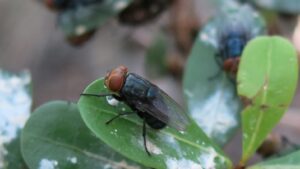The Federal Communications Commission last week blacklisted all new foreign-made drones and components over concerns the equipment poses 'an unacceptable risk' to national security. The timing of the ban hits…
US Reopening Phased Mexican Cattle Imports After Screwworm Closure
Reuters’ Karl Plume reported that “the U.S. Department of Agriculture announced on Monday a phased reopening of cattle, bison and equine imports from Mexico following a prolonged closure over the damaging pest New World screwworm.”
“Ports will reopen in phases as early as July 7, beginning with Douglas, Arizona, which the USDA said is the lowest risk entry point due to its location and the ‘long history of effective collaboration’ between officials in Sonora and USDA’s Animal and Plant Health Inspection Service,” Plume reported. “The southern U.S. border was closed to imports of the animals on May 11 after screwworm, a species of fly that has been eradicated in the U.S. for decades, had been moving northward in Mexico. Additional ports in New Mexico and Texas may be reopened in coming weeks.”

“The pest can infest livestock and wildlife and carry maggots that burrow into the skin of living animals, causing serious and often fatal damage,” Plume reported. “As part of the country’s effort to fight screwworm encroachment, the USDA announced plans on June 18 to open a sterile fly dispersal facility in Texas, and invested $21 million in updating a plant in Mexico to produce sterile flies.”
“‘We have made good progress with our counterparts in Mexico to increase vital pest surveillance efforts and have boosted sterile fly dispersal efforts,’ USDA Secretary Brooke Rollins said in a statement,” according to Plume’s reporting. “‘We are continuing our posture of increased vigilance and will not rest until we are sure this devastating pest will not harm American ranchers,’ she said.”
Port Reopening Timeline:
🔹Douglas, AZ – July 7
🔹Columbus, NM – July 14
🔹Santa Teresa, NM – July 21
🔹Del Rio, TX – August 18
🔹Laredo, TX – September 15*After each reopening, USDA will evaluate to ensure no adverse effects arise*
More ⬇️ https://t.co/gM3fX8fnSD
— Dept. of Agriculture (@USDA) June 30, 2025
“The port in Columbus, New Mexico, may reopen on July 14, followed by Santa Teresa, New Mexico, on July 21, Del Rio, Texas, on August 18 and Laredo, Texas, on September 15, the USDA said,” according to Plume’s reporting. “The agency added that it will evaluate conditions after each reopening to ensure that the enhanced control measures are working.”
How the USDA Plans to Fight the Pest
The Associated Press’ John Hanna reported that “the U.S. government is preparing to breed billions of flies and dump them out of airplanes over Mexico and southern Texas to fight a flesh-eating maggot.”
“That sounds like the plot of a horror movie, but it is part of the government’s plans for protecting the U.S. from a bug that could devastate its beef industry, decimate wildlife and even kill household pets,” Hanna reported. “This weird science has worked well before. The targeted pest is the flesh-eating larva of the New World Screwworm fly.”
“The U.S. Department of Agriculture plans to ramp up the breeding and distribution of adult male flies — sterilizing them with radiation before releasing them — so they can mate ineffectively with females and over time cause the population to die out,” Hanna reported. “It is more effective and environmentally friendly than spraying the pest into oblivion, and it is how the U.S. and other nations north of Panama eradicated the same pest decades ago.”
“Sterile flies from a factory in Panama kept the flies contained there for years, but the pest appeared in southern Mexico late last year,” Hanna reported. “The USDA expects a new screwworm fly factory to be up and running in southern Mexico by July 2026. It plans to open a fly distribution center in southern Texas by the end of the year so that it can import and distribute flies from Panama if necessary.”
What is New World Screwworm?
Progressive Farmer’s Jennifer Carrico reported that “NWS are fly larvae that infest living tissue of warm-blooded animals, causing infection. According to the Animal and Plant Health Inspection Service (APHIS), these maggots will burrow into a wound, feeding as they go doing extensive damage by tearing the host’s tissue with sharp mouth hooks. The wound becomes larger and deeper. NWS can cause serious, even deadly damage to the animal.”
“The adult screwworm flies are about the size of a common housefly with orange eyes, a metallic blue or green body, and three dark stripes along their backs. Affected mammals and birds show signs of irritated behavior, head shaking, smell of decay, evidence of fly strike, and presence of fly larvae in wounds,” Carrico reported. “Since the NWS only mate once, releasing sterile males to mate with the females helps decline the population.”
“USDA eradicated NWS from the United States in 1966 using the sterile insect technique and it was used successfully again in 2016 in the southern Florida Keys when found in deer,” Carrico reported. “This process continues to be used in Mexico and Latin America currently.”





